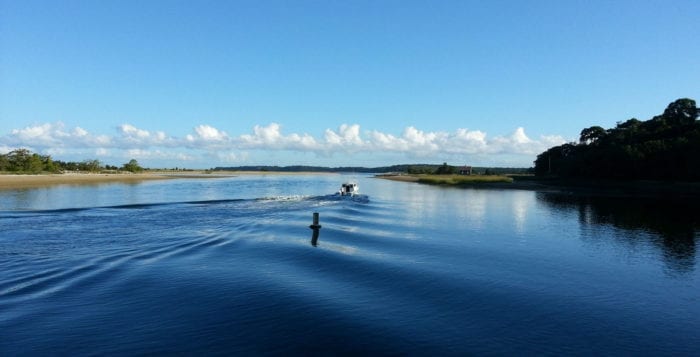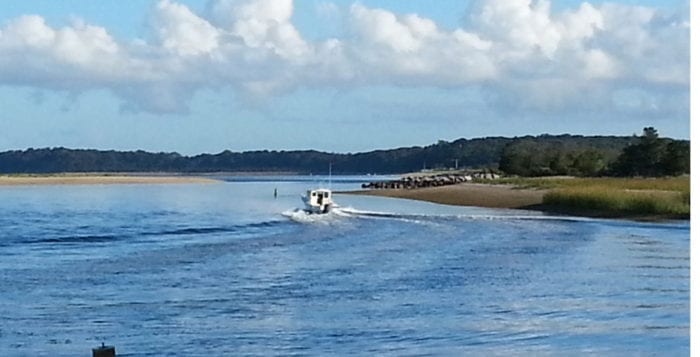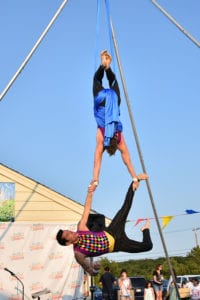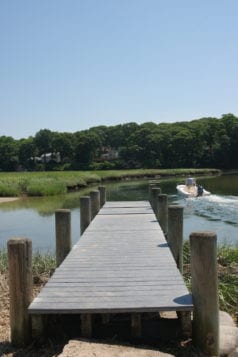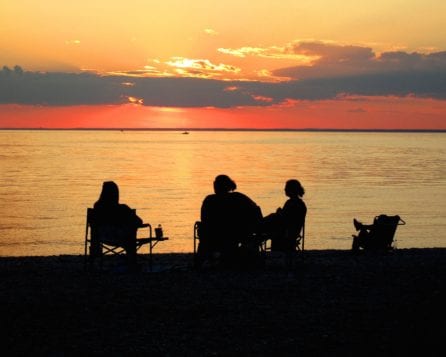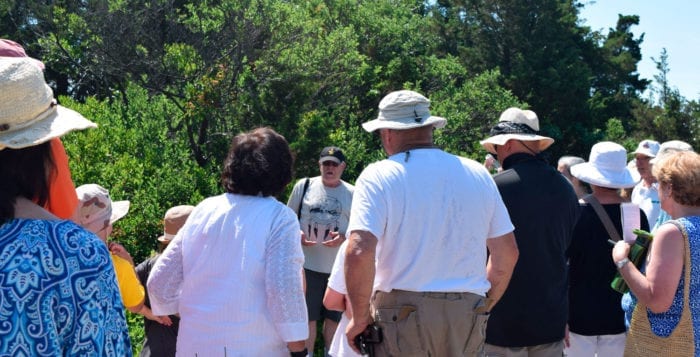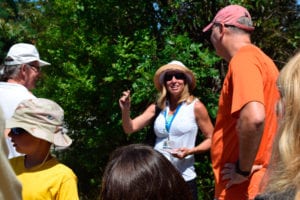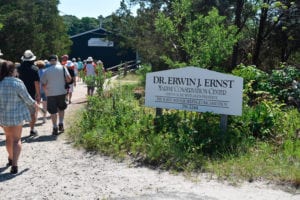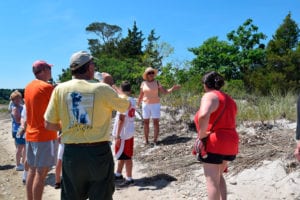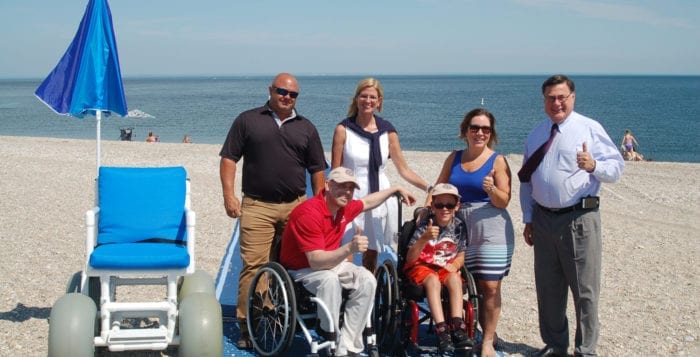By Katelyn Winter
Water, sun, sand and rocks. West Meadow Beach in Setauket is made up of simple components, but stop by any day of the week, any hour of the day, and you’ll see a symphony of activity going on.
The 1,100-foot waterfront off Trustees Road is where beachgoers of all walks of life go — and some go just to walk! There is a wide two-mile trail that goes through an 88-acre wetlands preserve, where visitors can explore on bike or foot the beauty of the marsh area. At around the midpoint of the trail is the Dr. Erwin J. Ernst Marine Conservation Center, which features a small dock and beautiful views.
The trail is a popular spot for people looking to up their step counts, but this Town of Brookhaven beach is popular because it presents the opportunity for a wonderful day outdoors, no matter what you’re looking to do.
Purchasing a parking pass or paying a daily fee is necessary, and you can visit the website at www.brookhaven.org to find out more about what you’ll need to bring and how much you’ll have to pay. Regardless, the price is small compared to the summer of beach-day adventures it will unlock.
“People love the sandbars,” says Jack Rachek, a town lifeguard working at West Meadow. “It’s our main attraction.” When low tide comes and the sandbars appear, you can expect to see young children and their parents heading out to wade in the shallow water and dig in the soft sand. Because the beach is part of the Long Island Sound, there aren’t big waves, and it’s small enough to keep that familiar hometown vibe.
Another lifeguard, Brittany, says she loves how “relaxed it is. There aren’t many saves; it’s just about keeping an eye out for the kids.” Lifeguards are on duty through Labor Day from 11 a.m. to 6 p.m. on weekdays, 10:30 a.m. to 6 p.m. on the weekends, so you can always be sure there is someone watching your children in the water and out. West Meadow is a beach for families. In addition to the calm waters, there are two playgrounds, checkerboard tables, a gazebo for shady picnics and a water sprinkler park.
Those features are why so many Three Village residents have happy memories of days spent at West Meadow. Beyond what the beach itself has on its grounds, though, there is so much that the people who work to make West Meadow the mecca of summer activity that it is have in store.
“People love the sandbars. It’s our main attraction.”
—Jack Rachek
Nancy Grant, of Friends of Flax Pond, is one of those people. She and her team of volunteers are working hard on the species conservation of the diamond-backed terrapin turtle, whose numbers are way down. “I have wonderful volunteers,” says Grant, who explained that while the turtles nest in the marshlands it is illegal to touch or pick them up. If you are interested in helping the diamond-back terrapins, there are meetings for new volunteers on the weekends, usually at around 9 a.m. Email [email protected] for more information on how you can make a difference through volunteering.
The diamond-back terrapins aren’t the only cause you can support, though! Citizen Ranger meetings and beach clean-ups are scheduled for the summer, and for information on those or any other program you should email the park ranger, Molly Hastings, at [email protected], or call 631-751-6714.
With so much going on at West Meadow, it is amazing how relaxed the beach environment really is. “It’s a great lunchtime escape,” says beachgoer Jeff, “and it’s an awesome windsurfing beach in the fall.” Indeed, outside the green flags that indicate safe swim areas, you’ll see lots of people enjoying the water in different ways.
In recent years, paddle boarding has become a popular way to exercise and enjoy the tranquility of being out on the water. Ocean kayaking is another way to get on the water without actually getting in it.
For those who are looking to get in the water, you should stay between the green flags, and be sure to leave the inner tubes, rafts and snorkel gear at home. And for kids who still need to brush up on their swimming skills, or even teens and adults who want to improve, you can actually take swimming lessons at West Meadow Beach with certified Red Cross instructors. Session III starts on Aug. 1 and lasts for two weeks. You can learn more by calling 631-281-2866 or visiting the beach’s website.
West Meadow Beach is a great place to have fun, but it’s also a great place to learn — whether you want to be able to do the front crawl or learn more about wildlife and conservation. The beach and trail are speckled with informative signs about the beach’s ecosystem and the animals that thrive in it. West Meadow Beach is a beloved Three Village attraction, and because of that, there are so many local groups, like Friends of Flax Pond and the Ward Melville Heritage Organization, that want to see it stay clean, safe and hospitable for people and wildlife.
As she went on her daily jog down the trail at West Meadow, a resident named Eileen stopped to tell me why she loved this beach. “It’s a wonderful place to grow up,” she smiled, “And it’s a wonderful place to keep nature as it is. As you go down this trail, there are over twenty species of birds you can see. It’s a very inexpensive pass for such a great summer.”
Whether your favorite part is being in the water or walking along the shore, this beach holds a special place in the hearts of those who visit it all year round. And that’s why West Meadow is a treasure among us.
Author Katelyn Winter is a rising junior at Muhlenberg College in Allentown, Pa., majoring in English and creative writing. She is from Stony Brook and hopes to one day work in the publishing industry.


